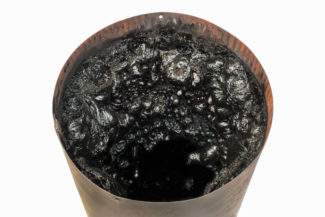
Chimney soot is fine black or dark brown powder formed due to incomplete combustion of wood or coal in a confined place. Hence it can be correctly referred to as the byproduct of fireplace combustion. Soot is formed in a temperature lower than 284 degrees. When fuel like wood, or charcoal burns, it breaks down and deposits itself as a powdery dust called soot. It is also responsible for giving a fire its yellow or reddish orange color as it radiates colors in the red to yellow spectrum. The other common names for chimney soot are lamp black and carbon black. It forms a common ingredient in the making of shoe polish.
Due to its color and texture, soot tends to darken or stain surfaces. It stains ventilations, walls, ceilings, floors, clothes, and even skin, and to do that, it is not even required in large proportions or concentrations. Since it is not burnt totally, creosote is slightly sticky and tends to cling to surfaces like exhaust pipes and chimney flue. Due to its blocking tendency, numerous problems can arise. Let us take a look at what they are:
- A clogged or blocked chimney is not able to draw in air smoothly. Hence fires become smoky and consume more and more fuel.
- If creosote accumulates in the chimney in a substantial quantity, it may be the cause of chimney fires. This is one reason why chimneys should be regularly inspected and cleaned.
- If soot falls back into the house through the chimney, the floors can get dirty and messy. This happens when the byproduct accumulates in the chimney, and due to the back-suction of air, it gets pulled back towards the inside of the house. Soot can stain carpets and floors and cleaning it up can get extremely messy.
- Being a carbon byproduct, soot can also become a health hazard. If inhaled in proportional quantities, it can affect the lungs and result in lung diseases and respiratory infections. This happens as soot contains polycyclic aromatic hydrocarbons (PAHs) in its gaseous form. This is not only harmful, but is also difficult to treat in case one acquires a serious infection or illness from this by product.
Chimney soot and creosote is inevitable and will be formed due to the use of a fireplace. So to avoid it, the only choice is to get your chimney cleaned. We are CSIA certified. Contact us today at 615-833-0349 to schedule an appointment or to contact us about any other chimney, fireplace, masonry, or dryer vent services that need to be handled. To connect further with us, find us online through our social media outlets (Facebook, Twitter, Yelp, & YouTube). Also, when you have the opportunity please leave us a great review online at Google. Thank you.
